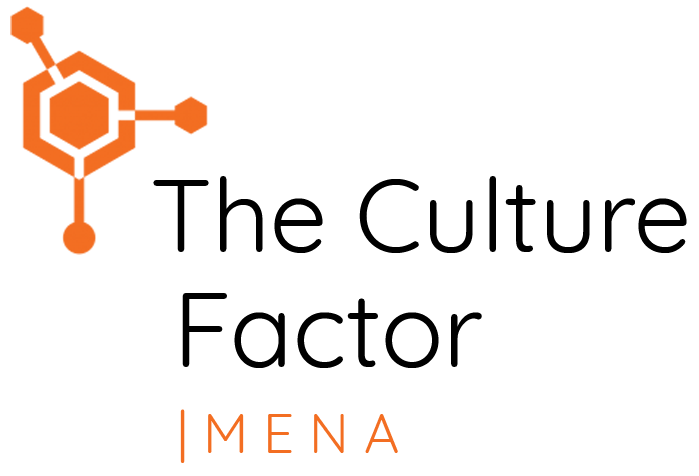First Things First
A country organization of a global industrial conglomerate of US origin had been having a close to flat growth curve for a number of years – differing from even smaller countries in the region. Additionally, engagement surveys showed deteriorating results in a number of vital areas (including leadership quality). Numerous attempts to rectify the situation led practically nowhere. The new CEO, Mark, accepted the challenge of implementing a quick and successful turnaround of the business. Where did he start?
Agreeing the target profile of the organization’s culture became the first step. Visualizing it, helped to understand to what extent the broad senior leadership team would be walking-the-talk. The findings were very interesting, as it turned out that among the team members the level of mutual trust was critically low, contrary to the high level of insecurity. Can you really effectively help navigate the organization when your own sense of direction and the readiness to change are impaired and your anxiety – soaring? Starting with basics, at the very top of the organization, step by step, Mark managed to revamp the business as expected. Eliminating the hurdles accelerated the entire process significantly. At the end of his two-year term the company regained its due position among other country organizations in the region in terms of both the growth rate and the associates’ engagement level.
The Golden Triangle
As the ancient Chinese proverb says, “A Journey of a Thousand Miles Begins with a Single Step”. Transforming an organization’s culture is a long and complex process, often measured in years. So, what IS that first step in such a long expedition? Understanding the Golden Triangle, becomes the most obvious choice: looking at the trust index, security index and the change salient factors, as the prerequisites of an effective change process that can make it or break it. Why? If one doubts the intentions, competencies or the reputation of the team members or their superiors – then it IS rather difficult to follow the lead, instructions and change their behaviors accordingly. When people are afraid (e.g., of their future) can you really expect that they will eagerly undertake a change effort? Or when they do not understand the purpose of the changes proposed or the action plans laid out? The Golden Triangle sets the scene of the possible transformation.
Trust
Feelings of trust have a very tangible price tag. Decades of research (e.g., P. Finuras, P.J. Zak and many more) showed trust’s direct impact on productivity, stress level in organizations, employee engagement or absenteeism with a very clear pattern: the higher the trust levels, the higher the energy, brain power or time that can be used productively in the organization.
An interesting phenomenon is that intensity of trust is not related to culture: irrelevant to where we come from and where we operate, we can trust others equally much. What differs are the mechanisms of how we build or gain trust. Those are very different in various national cultures. But this is a separate issue and a leadership challenge.
In practical terms – the Trust Index calculated through a regular organizational culture measurement: what information will it give us when analyzing the organization? Four things are the base:
- Are we good at building trust, can we do that? A technocratic approach despite its strengths ;-), results in a number of important weaknesses. One of them being deficiencies on the trust-building side.
- Are we credible enough? Do people in our organization have a perception that we deliver what we promise? Can they on rely on what is being said? As – if they can’t – how can we expect that they will follow our directions when the transformation starts…?
- Do we have or can we easily get the information and knowledge needed for us to do our jobs? If not – our confusion will prevent us from being productive.
- How well do we collaborate with other units in our organization – if there is mistrust among us – how efficient can our common business processes be?
Security
The other basic foundation of a successful change process is knowing to what extent are we building a culture that promotes and strengthens the feelings of security and gives the associates free energy to be invested in fulfilling the organization's strategic corner stones. So, what are the questions worth asking? What are the components of the Security Index, being a part of an OC scan?
- Are we confident in our direct superiors? Are we convinced that the boat we are all sitting in, is in good, steady hands and going in the right direction?
- How inclusive (and warm) is our culture? How easy (or difficult) is it for e.g., newcomers to feel at home and be fully productive as team members? This will allow us e.g., to understand how quickly we will be able to return to normal productivity after a possible distortion caused by a transformation.
- Do we a culture where people need to worry about losing their jobs?
- The benefit of the doubt – is this a common approach among our associates and leaders? Thus, how do we perceive failures and errors?
- How open can we be with our colleagues and bosses in regard to what worries us and what problems we might have? Can we count on some support when needed?
- What is our approach to risk-taking?
- We all live in rather unpredictable times – can our culture limit this external stress? Or rather amplifies it?
Salient Change Factors
What other factors need to be taken into consideration when evaluating ease of change in an organization?
One is definitely the Change Readiness Index showing if people know why the change is happening, what to change and – eventually – also how to change?
Another issue is the Degree of Proceduralization or, if you like, to what extent our culture is driven by procedures: how many they are and how important it is for us to keep tight to them in everyday work.
And last but far from the least: Sense of Urgency, perceived by the members of the organization.
Evaluating the preconditions for effective transforming the culture of an organization needs to rely on robust, well researched and tested approach, backed with solid data. The Golden Triangle provides a firm foundation for far reaching decisions: go/no go, how to prepare for the change, what risks to mitigate, what support can we count on.
When looking at the Triangle per se you get an impression that this a complex framework, important but rather difficult to compose. Its importance is beyond any discussion, however when you run a regular Organizational Culture scan, using the Hofstede Insights MultiFocus Model™ the Golden Triangle or – if you like – the Change Feasibility Characteristics is a routine part of the report, which not only describes the as-is culture, the gaps towards the strategically delimited culture profile but also helps to visualize potential hurdles and challenges in a potential change process. By default.





